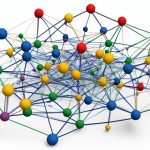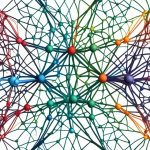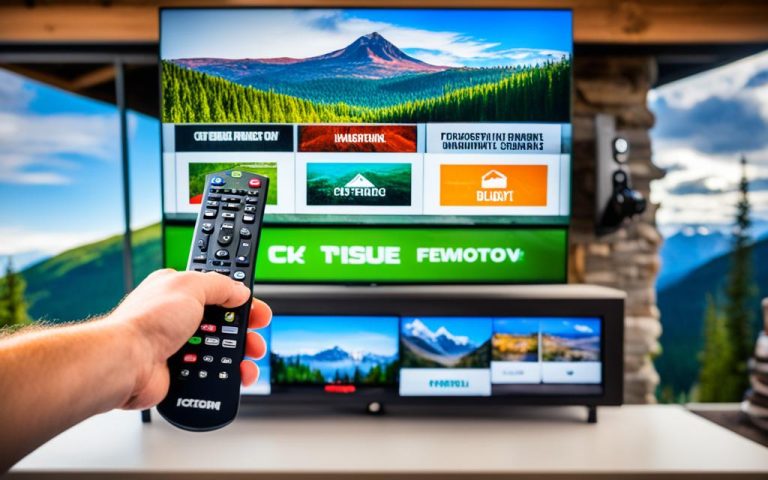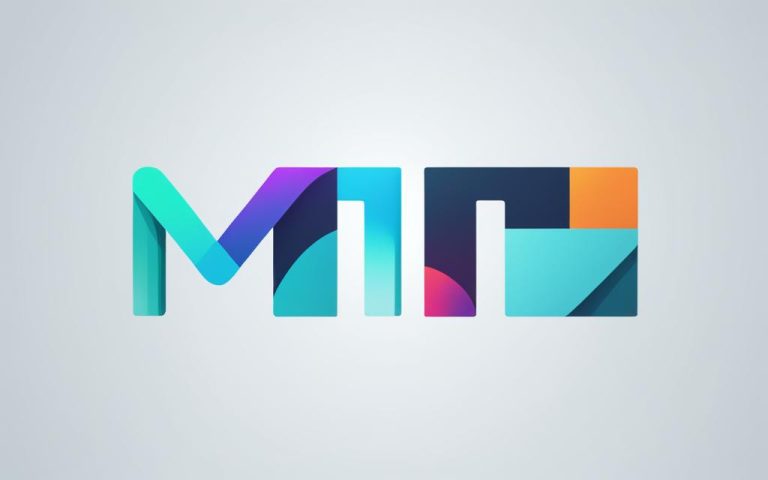This article gives a detailed look at Binary Neural Networks (BNN) and their many uses. BNNs are quickly becoming important for making machine learning faster and more efficient. They are especially useful in computer vision, natural language processing, and making mobile devices work better.
BNNs use only 1-bit for activations and weights, which makes them fast and uses less memory. This lets them work quicker, take up less space, and use less energy. These features make them perfect for use in things like edge devices, self-driving cars, and speech recognition.
Key Takeaways
- Binary Neural Networks (BNN) use 1-bit for activations and weights for fast computation and less memory.
- BNNs are quick, compress data well, and use less energy.
- They are used in computer vision, natural language processing, and making mobile devices better.
- New tools like Tensorflow, BinaryDenseNet, FINN-R, BMXNet 2, and MeliusNet help us use BNNs better.
- Challenges include finding the right way to quantize, searching for the best architecture, propagating gradients, and regularizing activations.
1 A detailed review in the Artificial Intelligence Review journal in 2023 shows how much work has been done on BNNs. It covers many topics, including how to make them better and where they are used. The review talks about different methods like Hadamard transforms and BinaryDenseNet.
2 Important studies and tools for BNNs include Tensorflow from 2016, BinaryDenseNet from 2019, FINN-R from 2018, BMXNet 2 from 2020, and MeliusNet from 2020. These have helped improve how we use BNNs.
Research on BNNs is still growing. It focuses on new ways to make them better, finding the best architecture, and improving how gradients work. These efforts aim to make BNNs more accurate, efficient, and useful in many areas.
Introduction to Binary Neural Networks
Binary Neural Networks (BNNs) are changing the game in deep learning. They use binary weights and activations for efficient computation and storage. This makes them perfect for devices with limited resources. BNNs can do what traditional Deep Neural Networks (DNNs) do but use much less memory and computation.
The goal of BNNs is to make deep learning faster and use less energy. By using only binary values for weights and activations, they cut down on memory and computation. This leads to big savings in power use.
BNNs have many benefits over traditional networks. They work well on devices with limited power, like in mobiles and IoT gadgets. They also use less power, which is great for saving energy. Plus, they’re more resistant to noise and disturbances because of their binary nature. They also help keep computations secure by hiding the real values of weights and activations.
Studies on datasets like MNIST, CIFAR-10, and SVHN show BNNs perform almost as well as the best models. For example, a special GPU kernel can run a BNN seven times faster than an old GPU kernel3. The sign function used in BNNs is simple and efficient. Adding noise to weights and activations helps improve their performance3. Training BNNs can be seen as a type of Dropout method3. Using the straight-through estimator helps train BNNs efficiently with binary weights3.
There have been big advances in making BNNs more efficient. Techniques like channel-wise separable convolutions and pruning have made DNNs smaller and faster4. By reducing the bit width of values, researchers have made models smaller without losing much accuracy4. BNNs are a form of quantization, using only 1-bit values4. The BinaryConnect method lets DNNs use binary weights throughout training and keep full precision activations4. These advances have made BNNs more useful and efficient.
Benefits of Binary Neural Networks:
- Enhanced computational efficiency and reduced memory requirements
- Faster inference speed with lower power consumption
- Improved robustness to noise and disturbances
- Facilitates secure computation and privacy preservation
Real-Life Applications of Binary Neural Networks:
- Edge computing and IoT devices
- Mobile and wearable technology
- Embedded systems
- Security and privacy-sensitive applications
BNNs are a game-changer in deep learning. They make AI work on devices with limited resources and improve privacy and security. BNNs are pushing the limits of what AI can do.
Evolution of Binary Neural Networks
Binary Neural Networks (BNNs) have changed the game in artificial intelligence. They started as a way to make deep neural networks simpler and faster. This led to big steps forward and new ideas that changed AI for the better.
The big leap for BNNs was when they introduced networks with only 1-bit weights and actions. In 2016, Hubara et al. created BinaryNet5. This was a huge step forward, showing BNNs could be really accurate and use much less power than full-precision models5.
After that, researchers came up with new ideas like XNOR-Net, Dorefa-Net, and ABC-Net. These models looked at different ways to make BNNs work better5. In 2020, ReActNet came along, bringing more ways to make BNNs more efficient6. These updates made BNNs more accurate and useful7.
Then, in 2022, BiBERT was introduced. It’s a fully binarized BERT model that makes the most of representation information and works really well6. This has opened up new chances for BNNs in natural language processing and other areas.
Also, BNNs got a lot better at doing tasks quickly thanks to daBNN. This framework from 2019 makes BNNs super fast on ARM devices6. It’s all about making BNNs faster and using less memory.
The research community and funding groups are really into BNNs now. They’re working on making BNNs better and closing the gap with full-precision models7. This has led to big gains in accuracy and speed, making BNNs a strong choice in AI.
In short, BNNs have grown a lot thanks to new research, tech advances, and constant innovation. They’ve gotten much better at doing tasks, using less power, and being easier to use. As researchers keep exploring, we’ll see even more cool things from BNNs in many areas.
Optimization Techniques for Binary Neural Networks
Optimizing Binary Neural Networks (BNNs) is key to getting great results and making them work well on different devices. This part looks at some important ways to make BNNs better.
Training Optimization
Training BNNs is tough because they use fewer bits for weights and actions. To fix this, many new ways to optimize have been found. They come from both old neural networks and what’s special about BNNs.
One big help is pruning. This method cuts down the size and work needed of Deep Neural Networks (DNNs) by removing unneeded parts. When used on BNNs, it makes them use less resources and work better without losing accuracy4.
Another big idea is quantization. This makes models smaller and use less power while keeping accuracy the same. Gupta et al. showed that using less data types through quantization can make models smaller without losing performance4.
Inference Optimization
When making predictions, we use special tricks to make BNNs faster and more efficient. One key trick is using bitwise operations. These take advantage of BNNs being binary, making calculations faster and using less memory. This makes predictions better4.
Hardware Optimization
Optimizing BNNs also means looking at the hardware they run on, like FPGAs. Making custom hardware for BNNs on FPGAs is getting a lot of attention. It’s because it can make BNNs work really well with less resources4.
Summary
There are many ways to make Binary Neural Networks better, for both training and making predictions. Things like pruning, quantization, bitwise operations, and custom hardware help make BNNs more efficient and powerful. These methods let BNNs work on devices with less power and still keep their accuracy high4.
| Library | Number of Papers |
|---|---|
| 1adrianb/binary-networks-pytorch | 5 |
| hpi-xnor/BMXNet-v2 | 3 |
| PaddlePaddle/PaddleOCR | 2 |
There are also many datasets and libraries for testing and using BNN optimization techniques. Libraries like 1adrianb/binary-networks-pytorch, hpi-xnor/BMXNet-v2, and PaddlePaddle/PaddleOCR have helped grow and study BNNs. They’ve published a total of ten papers8.
These methods and tools are helping Binary Neural Networks get better. They’re making BNNs more useful and efficient for lots of uses.
Deployment of Binary Neural Networks
Deploying Binary Neural Networks (BNNs) is key to moving these efficient models from research to real-world use. Developers use frameworks and tools to make BNNs work well in different applications. This makes it easier to develop, optimize, and integrate these models.
BNNs are great because they use less memory and run faster than traditional 32-bit CNN models9. For example, they can use 32 times less memory and run up to 58 times faster on CPUs10.
Frameworks like TensorFlow, PyTorch, and Keras help with developing and deploying BNN models. These tools offer many features for training, testing, and using BNNs. This makes it easier for developers to add these models to their projects.
A well-known BNN model, AlexNet, had 60 million floating-point parameters and 650,000 neurons in 20129. The VGG-16 model, made in 2014, had over 130 million parameters9. But BNNs use only 1-bit for activations and weights in the convolution layers9.
BNNs are used in many areas, like classification, pattern recognition, computer vision, and natural language processing9. For example, the 2021 CVPR workshop on “Binary Networks for Computer Vision” showed how BNNs are important in computer vision tasks9. These examples show how BNNs help make smart systems in various industries.
To make BNNs work well, we use optimization techniques. These include methods like quantization, pruning, and knowledge distillation9. These techniques improve the accuracy and efficiency of BNNs for real-world use.
But, BNNs can have issues in real applications, like losing accuracy10. Many studies suggest we need to optimize BNNs to keep them effective in real situations10.
Table: Applications of Binary Neural Networks
| Application | Number of Papers | Percentage |
|---|---|---|
| Medical Applications | 4 | 10.3% |
| Image Processing and Computer Vision | 12 | 30.8% |
| Hardware Implementations | 3 | 7.7% |
| Novel Training Methods | 9 | 23.1% |
| Agricultural Sector | 1 | 2.6% |
| Face Detection and Recognition | 5 | 12.8% |
| Speech Emotion Recognition | 3 | 7.7% |
| Object Detection and Classification | 6 | 15.4% |
| Optimization Methods | 6 | 15.4% |
From the table, we see BNNs are used in many areas, including medicine, image processing, and more11. Researchers are always finding new ways to make BNNs better and more efficient119.
In conclusion, deploying BNNs means using frameworks, tools, and optimization to put these models into real-world use. Their ability to save memory and run fast makes them promising for many industries and areas910.
Efficient Computing Architectures for Binary Neural Networks
Efficient computing architectures are key for making Binary Neural Networks (BNNs) work better. They use hardware and software tricks to speed up BNNs. This makes them more efficient and useful in many areas.
BNNs use simple one-bit weights and are getting popular because they’re small and use less power. This makes them great for edge computing in fields like Intrusion Detection Systems (IDS) and Aerospace.
Researchers are working hard to make BNNs better. They’re looking at how to make the networks work faster and more efficiently. They’re also exploring new ways to design and test these networks.
Advancements in Efficient Computing Architectures for BNNs
One big step forward is using super-fast Ethernet connections. These connections can go up to 40 Gbps or more12. This helps BNNs process data quickly.
Another big leap is the creation of massively-parallel binary neural networks (MPBNNs)12. These networks use simple one-bit weights. This makes them use less memory and less power. MPBNNs can accurately classify data, sometimes even better than full-precision networks12.
FPGA-based designs are also key to improving MPBNNs. These designs use genetic optimization to make the networks work better and more accurately12. The Xilinx Kintex Ultrascale+ FPGA is used in these designs. Early tests show they work fast and use few resources12.
Performance Metrics and Resource Usage
When testing BNNs, we look at how well they perform and how they use resources12. We check things like accuracy and how well they catch malicious packets. This helps us see how good these networks are compared to others12.
Applications in Edge Computing
BNNs are great for edge computing tasks like Intrusion Detection Systems (IDS)12. They work well in real-time, catching intrusions fast. This makes them very useful.
In Aerospace, BNNs help make binary convolutional neural networks work better13. They’re efficient and still keep their accuracy. This is important for aerospace tasks.
Contributors and Expertise in Efficient Computing Architectures
A book called “Binary Neural Networks: Comprehensive Review and Applications” shares insights on BNNs14. It’s written by experts and has lots of illustrations14. Baochang Zhang, one of the authors, is very well-known in the field14.
Other experts like Sheng Xu, Mingbao Lin, Tiancheng Wang, and Dr. David Doermann have also made big contributions14. Sheng Xu and Mingbao Lin have published a lot and know a lot about BNNs14. Tiancheng Wang is a Ph.D. student with new ideas, and Dr. David Doermann has helped fund and advance research in many areas14.
Efficient computing architectures are crucial for Binary Neural Networks. They make these networks work better and use them in many areas. With ongoing improvements, these architectures will change edge computing and help BNNs in many fields.
Diverse Applications of Binary Neural Networks
Binary Neural Networks (BNNs) are changing how we do things in many areas. They bring new ways to tackle tasks in fields like computer vision, natural language processing, speech recognition, and autonomous driving.
Computer Vision
BNNs are making big strides in computer vision. They help with recognizing and classifying images using only 0s and 1s. This cuts down on the need for complex calculations, saving energy and making them great for quick image tasks15.
Natural Language Processing
In natural language processing, BNNs are a game-changer. They speed up and make more efficient tasks like analyzing texts and understanding language. This means faster and more precise language processing15.
Speech Recognition
Speech recognition systems with BNNs work amazingly well. They’re great for devices with limited power, like mobiles and embedded systems. This makes them perfect for voice assistants and transcription15.
Autonomous Driving
BNNs are key to improving self-driving cars. They quickly process visual data for tasks like spotting objects and making decisions. Their energy efficiency helps self-driving cars go further and last longer15.
Robotics
BNNs are also changing robotics. They’re used in robots that walk and control systems for robots with legs. BNNs help these robots move smoothly and make complex calculations easier1617.
BNNs are used in many areas, thanks to their speed and efficiency. But, they also face challenges like accuracy and complexity. Ongoing research aims to improve BNNs, making them even more useful in AI and other fields151617.
Potential Directions and Future Research Opportunities in Binary Neural Networks
The field of binary neural networks (BNNs) is growing fast and has a lot of potential for new research and growth. We will look at the current challenges and chances in BNNs. We will also talk about the possible paths for more research and study.
1. Enhanced Model Architecture and Training Techniques
There’s a lot to explore in BNNs, especially in making better model designs and training methods. Finding ways to improve accuracy and performance is key. For example, a study showed how a new training method for binary activation neural networks (BANNs) worked well18.
2. Expanding Application Domains
BNNs are already doing well in image recognition. Now, researchers can look at using them in more areas. For instance, they work well in object detection18. Looking into using BNNs in things like language processing, self-driving systems, and healthcare could open up new possibilities.
3. Hardware Optimization
Specialized hardware is crucial for making BNNs work well. Future research could focus on creating hardware just for BNNs. This would make them faster and more practical for real-world use.
4. Comparative Analysis and Benchmarking
Studying different BNN models and comparing them to real-valued ones gives us important insights. Future studies could look at how various BNN types perform on different tasks19. This would help us see what’s good and what’s not about each BNN type and guide future improvements.
5. Addressing Quantization Errors
Fixing the problems caused by reducing data precision in BNNs is a big challenge. BNNs save a lot of memory and run fast but might not be as accurate as real-valued models19. Researchers should work on finding ways to lessen these errors. Techniques like using different bit widths and scaling methods could help20.
In conclusion, binary neural networks have a lot of potential for future research and growth. By improving models, using them in more areas, optimizing hardware, comparing different models, and fixing data precision issues, we can make BNNs even better.
Novel Approaches in Binary Neural Networks
In recent years, Binary Neural Networks (BNNs) have seen big leaps forward. This has led to new ways and techniques that make BNNs more efficient and useful. These new methods aim to make BNNs use less memory and do less work while still working well in many areas.
One big area being looked at is binary quantization. This means making the values in the network smaller, which uses less memory and makes the model smaller. But it still keeps the accuracy pretty good4. Researchers are working on different ways to do this, using only binary values for weights and activations. This makes the math easier and makes the networks work faster4.
How BNNs are designed is also very important. Developers are finding new ways to make them work better and use resources well. For example, using special hardware for BNNs can make them work up to 60% faster3. This helps solve some of the problems with training and using BNNs in real life.
Another big area is making better algorithms for training BNNs. These algorithms help train BNNs even when they have binary weights and activations. Researchers have come up with new ways to calculate gradients and use the Dropout method and straight-through estimator to improve training3.
Putting BNNs on low-power devices is also a focus. With more need for efficient AI, researchers are looking at using BNNs on things like FPGAs4. This lets BNNs work well in devices that use a lot less power, making them useful in many areas.
Overall, working on new ways for BNNs is leading to big improvements. These include better binary quantization, design, algorithms, and using them on different platforms. These changes could make BNNs work better, use less power, and be more useful in areas like computer vision, natural language processing, and robotics.
Comparison of Binary Neural Networks Approaches
| Approach | Advantages | Disadvantages |
|---|---|---|
| BinaryConnect | Efficient bitwise operations Enables hardware acceleration |
Challenging weight updates due to binary values |
| Bayesian Learning | Overcomes challenges in learning with binary values Enables training with binary weights and activations |
Complex implementation |
| FPGA Implementation | Low-power deployment potential Platform flexibility |
Requires adaptations for specific hardware |
Comparison of Binary Neural Networks with Other Approaches
When looking at deep learning models, it’s useful to compare Binary Neural Networks (BNNs) with others. BNNs use binary weights and activations, making them efficient. This leads to models that take up less memory and work faster. Let’s see how BNNs stack up against traditional neural networks and low-bit quantization.
1. Traditional Neural Networks
Traditional neural networks like VGG-16 and ResNet-50 are common in computer vision and natural language processing. But, they have many parameters, which can be a problem on devices with limited resources. For example, VGG-16 has about 140 million parameters21. ResNet-50 can cut over 75% of parameters and 50% of time by removing unnecessary weights21. These models are accurate but can be too big for some situations.
2. Low-Bit Quantization Techniques
Low-bit quantization tries to use less memory and speed up by representing parameters in fewer bits. Techniques like quantized neural networks can greatly compress and speed up networks. For instance, binarization can save up to 32x memory and speed up by 58x for a 1-bit layer21. But, BNNs bring more to the table than just saving space and speeding up.
Benefits of Binary Neural Networks
“Binary neural networks enjoy memory saving, power efficiency, and significant acceleration compared to other compression methods.”
– Statistical Data21
BNNs not only save memory but also use less power and work faster than other methods21. These traits make BNNs perfect for edge devices and systems with limited resources. Memory and power use are key concerns in these settings.
Studies show that BNNs can filter out noise and are more robust than full-precision networks21. The Bi-Real Net is an example of how to lessen binarization’s info loss and boost deep neural network performance21.
Using ensemble methods can also boost BNN performance. By combining several weak classifiers, BNNs can get much more accurate and reliable21.
Challenges and Limitations of Binary Neural Networks
Binary Neural Networks (BNNs) have many benefits but also face challenges and limitations.
1. Training Challenges
Training BNNs is tough because of how they work with binary numbers. They often don’t match the accuracy of regular neural networks. For example, BNNs had a 10.15% error rate on the CIFAR-10 dataset, while regular networks had a 7.62% error rate22. This makes it hard to get high accuracy because of the loss of information when using only binary values.
2. Inference Challenges
Efficient inference is a big challenge for BNNs. Binarization helps save memory and cuts down on computing power. But, it makes things more complex because it requires special hardware and lots of bitwise operations. Models like VGG-16 are especially hard to run on devices with limited resources21.
3. Generalization Limitations
Generalization, or how well a model works on new data, can be a problem for BNNs. Binarization limits the model’s ability to recognize complex patterns. This can affect how well they perform on different datasets and real-world situations.
4. Trade-offs: Accuracy vs. Efficiency
BNNs have to balance accuracy with efficiency. They’re faster, use less memory, and save power compared to traditional networks. But, they’re not as accurate because of the binary nature of their calculations (BNNs can be up to 32 times faster and use 32 times less memory than regular networks)22. Whether to use BNNs depends on the app’s needs, where saving resources might be more important than getting the highest accuracy.
| Challenges and Limitations | |
|---|---|
| Challenges | Limitations |
|
|
Despite these hurdles, researchers are working hard to improve Binary Neural Networks. They’re finding new ways to make BNNs better and overcome their current limitations. The interest in BNNs is growing, showing how important it is to tackle these challenges and push BNNs forward (BNNs are useful in many areas like classification, pattern recognition, computer vision, and natural language processing)9.
Next, we’ll look at possible directions and future research in Binary Neural Networks.
Conclusion
This review covered the growth, optimization, and use of Binary Neural Networks (BNNs). It showed how BNNs can make deep learning work better in devices with less power and space. They are great for tasks like healthcare and self-driving cars, proving they work well in real life15.
BNNs face issues like losing some accuracy, which can affect how well they work15. But, in the last five years, we’ve made big steps to fix these problems and make BNNs better23. We looked at different types of BNNs and how they’re used in things like seeing and hearing23.
BNNs are great because they use less memory and energy and work fast15. They are perfect for quick tasks and saving energy15. As we keep improving them, BNNs could change AI and make it easier to use in places with limited resources15.
Binary Neural Networks are a big step forward in AI, opening doors to more efficient and easy-to-use tech. They offer new chances for progress in healthcare, farming, and other areas where resources are scarce. As we keep exploring BNNs, they will likely do more and help everyone15.
FAQ
What are Binary Neural Networks (BNNs)?
Binary Neural Networks (BNNs) use only binary values (1 or 0) instead of real numbers. They help deep learning work better in devices with less power and space.
What are the benefits of Binary Neural Networks?
BNNs need less storage and use less energy. They work well on small devices and can be used in many real-life situations.
How have Binary Neural Networks evolved?
BNNs have grown by developing new algorithms and techniques. This review looks at 1-bit activations and weights, and 1-bit convolution networks closely.
What optimization techniques are used for Binary Neural Networks?
Making BNNs work well is key. This part talks about important optimization methods. It covers how to improve training and inference and solve problems with limited precision.
How can Binary Neural Networks be deployed?
To use BNNs, you need to model and develop them with open-source frameworks. This part talks about frameworks and tools for modeling and deploying BNNs. It also looks at their benefits, limits, and how they’re used in the real world.
What are efficient computing architectures for Binary Neural Networks?
The right computing architectures are vital for BNNs. This section looks at different architectures and devices made for BNNs. It talks about new hardware and software that help with efficient computation and speeding things up.
In what applications can Binary Neural Networks be used?
BNNs are used in many areas like computer vision, natural language processing, speech recognition, and autonomous driving. This section shows where BNNs work well and their special benefits.
What are the potential research opportunities in Binary Neural Networks?
BNNs are always getting better, offering many chances for new research. This section talks about current challenges, chances, and areas to explore more in BNNs. It also looks at new trends and research chances.
What are the novel approaches in Binary Neural Networks?
This section looks at new ways in binary quantization, design, and optimization in BNNs. It highlights fresh ideas and methods that could make BNNs even better.
How do Binary Neural Networks compare to other approaches?
BNNs are different from traditional neural networks and low-bit quantization. This section talks about the trade-offs and benefits of BNNs. It focuses on their efficiency, size, and saving energy.
What challenges and limitations do Binary Neural Networks face?
BNNs have shown good results but also have challenges and limits. This section talks about the issues with training, inference, and generalization in BNNs. It looks at the limits of binary quantization and the trade-offs between being accurate and efficient.
Source Links
- https://ouci.dntb.gov.ua/en/works/lDA8Jbz9/ – A comprehensive review of Binary Neural Network
- https://www.springerprofessional.de/en/a-comprehensive-review-of-binary-neural-network/25190966 – A comprehensive review of Binary Neural Network
- http://papers.neurips.cc/paper/6573-binarized-neural-networks.pdf – Binarized Neural Networks
- https://www.mdpi.com/2079-9292/8/6/661 – A Review of Binarized Neural Networks
- https://proceedings.mlr.press/v119/han20d/han20d.pdf – Training Binary Neural Networks through Learning with Noisy Supervision
- https://www.semanticscholar.org/paper/8763be7b1d30d1575c76e21eedd1be94c5c20246 – [PDF] BiFSMN: Binary Neural Network for Keyword Spotting | Semantic Scholar
- https://www.sciencedirect.com/science/article/abs/pii/S0167865521004438 – Data-adaptive binary neural networks for efficient object detection and recognition
- https://paperswithcode.com/task/binarization?page=3&q= – Papers with Code – Binarization
- https://ar5iv.labs.arxiv.org/abs/2110.06804 – A comprehensive review of Binary Neural Network
- https://cdn.aaai.org/ojs/16306/16306-13-19800-1-2-20210518.pdf – SA-BNN: State-Aware Binary Neural Network
- https://www.ncbi.nlm.nih.gov/pmc/articles/PMC10675041/ – Binary Neural Networks in FPGAs: Architectures, Tool Flows and Hardware Comparisons
- https://www.sciencedirect.com/science/article/abs/pii/S0140366421002693 – Genetically optimized massively parallel binary neural networks for intrusion detection systems
- https://hkxb.buaa.edu.cn/EN/10.7527/S1000-6893.2020.24504 – Binary convolutional neural network: Review
- https://www.routledge.com/Binary-Neural-Networks-Algorithms-Architectures-and-Applications/Zhang-Xu-Lin-Wang-Doermann/p/book/9781032452487 – Binary Neural Networks: Algorithms, Architectures, and Applications
- https://bloghart.com/a-comprehensive-review-of-binary-neural-networks/ – A Comprehensive Review of Binary Neural Networks – Bloghart.com
- https://www.ibm.com/topics/neural-networks – What is a Neural Network? | IBM
- https://www.aimsciences.org/article/doi/10.3934/dcdsb.2022097 – Permutation binary neural networks: Analysis of periodic orbits and its applications
- https://openreview.net/forum?id=lGUyAuuTYZ – Can we get the best of both Binary Neural Networks and Spiking…
- https://openaccess.thecvf.com/content_ICCVW_2019/papers/NeurArch/Bethge_BinaryDenseNet_Developing_an_Architecture_for_Binary_Neural_Networks_ICCVW_2019_paper.pdf – BinaryDenseNet: Developing an Architecture for Binary Neural Networks
- https://proceedings.neurips.cc/paper/2020/file/53c5b2affa12eed84dfec9bfd83550b1-Paper.pdf – PDF
- https://arxiv.org/pdf/2004.03333 – Binary Neural Networks: A Survey
- https://towardsdatascience.com/binarized-neural-networks-an-overview-d065dc3c94ca – Binarized Neural Networks: An Overview
- https://arxiv.org/pdf/2011.14824 – PDF



















